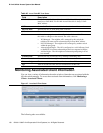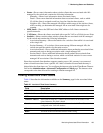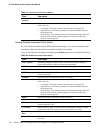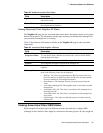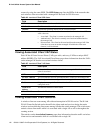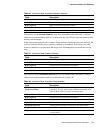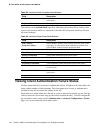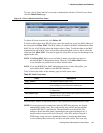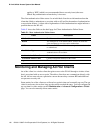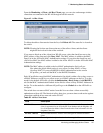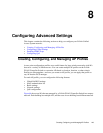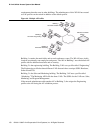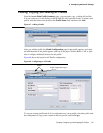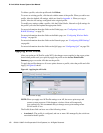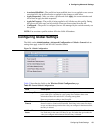
146 © 2001- 2006 D-Link Corporation/D-Link Systems, Inc. All Rights Reserved.
D-Link Unified Access System User Manual
applies to WEP (which is not recommended due to security issues) that uses
Shared Key authentication when the key is incorrect.
The client authentication failure status for an individual client shows information about the
client that failed to authenticate or associate with an AP and list the number of authentication
or association failures. A client with a high number of failed authentications might indicate a
possible threat to the WLAN.
Table 51 shows the fields on the detail page for Client Authentication Failure Status.
Monitoring and Managing Ad Hoc Clients
An ad hoc client is a wireless client that gains access to the WLAN through a wireless client
that is associated with an access point. The ad hoc client does not communicate directly with
the AP. Ad hoc networks are a particular concern because they consume RF bandwidth and
can present a security risk.
Status entries for ad hoc clients are collected at a point in time and eventually age out. The age
value for each entry shows how long ago the switch recorded the entry. You can configure the
age out time for status entries on the Administration > Advanced Configuration > Global
page. You can also manually delete status entries.
Table 51. Client Authentication Failure Status
Field Description
MAC Address The Ethernet address of the client.
BSSID The managed AP VAP Ethernet MAC address on which the
client attempted to associate and/or authenticate.
SSID The network SSID on which client attempted to associate and/
or authenticate.
Last Failure Type Indicates the last type of failure that occurred, which can be
Authentication or Association.
Authentication Failure Count Count of authentication failures for this client.
Association Failure Count Count of association failures for this client.
Age Time since failure occurred.



